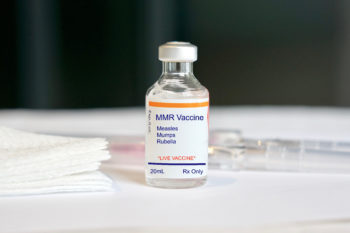Given the ongoing shortage in supply of COVID-19 vaccine doses in the region, local vaccination sites are prioritizing people with second appointments.
Two conflating issues are delaying the release of new appointments for San Diegans who want to get their first dose. One is a shortage of Moderna doses coming into the region to make up for the shipments delayed a few weeks ago by bad weather across the country. The other is that Pfizer doses that have arrived are being used almost exclusively to vaccinate people who are due to receive their second dose of vaccine.
While some first-dose appointments have been released for use by the County and its partners, they are reserved under state guidelines for groups such as law enforcement, teachers and other school personnel.
“Our sites are working diligently to complete the vaccinations of people who are due for their second doses,” said Wilma Wooten, M.D., M.P.H., County public health officer. “When we get through the Moderna backlog, and more doses arrive, including the new Johnson and Johnson vaccine, first-dose appointments will be released for the many people who are both eligible and eager to get vaccinated.”
Vaccination Progress
Local vaccination sites are currently providing vaccine to San Diegans in Phase 1A and Phase 1B.
To date, nearly 1,070,000 COVID-19 doses have been delivered to the region with close to 946,000 administered. The difference between the two numbers represents approximately what is expected to be administered the next seven days and doses still to be entered in the record system. Nearly 7,400 doses were administered and are pending full documentation.
Those vaccinated to date include nearly 290,000 San Diegans who are fully vaccinated, while more than 22% of San Diegans over age of 16 have received at least one dose, representing nearly 595,000 people.
State Metrics:
- San Diego County’s state-calculated, adjusted case rate is currently 10.8 cases per 100,000 residents (as of March 2) and the region is in Purple Tier or Tier 1.
- The testing positivity percentage is 4.2%, placing the County in Tier 3 or the Orange Tier. While the testing positivity rate for the County qualifies it for Tier 3, the state uses the most restrictive metric – in this case the adjusted case rate – and assigns counties to that tier. Therefore, the County remains in the Purple Tier or Tier 1.
- The County’s health equity metric, which looks at the testing positivity for areas with the lowest healthy conditions, is 6% and is in the Red Tier or Tier 2. This metric does not move counties to more restrictive tiers but is required to advance to a less restrictive tier.
- The California Department of Public Health assesses counties on a weekly basis. The next report is scheduled for Tuesday, March. 9.
Community Setting Outbreaks:
- 11 new community outbreaks were confirmed March 2: three in a grocery setting, two in a retail setting, two in a business setting, two in a faith-based setting, one in a restaurant/bar setting and one in a food/beverage processing setting.
- In the past seven days (Feb. 24 through March 2), 30 community outbreaks were confirmed.
- The number of community outbreaks remains above the trigger of seven or more in seven days.
- A community setting outbreak is defined as three or more COVID-19 cases in a setting and in people of different households over the past 14 days.
Testing:
- 13,293 tests were reported to the County on March 2, and the percentage of new positive cases was 3%.
- The 14-day rolling average percentage of positive cases is 3.7%. Target is less than 8.0%.
- The 7-day, daily average of tests is 13,099.
Cases, Hospitalizations and ICU Admissions:
- 352 cases were reported to the County on March 2. The region’s total is now 261,353.
- 13,179 or 5% of all cases have required hospitalization.
- 1,599 or 0.6% of all cases and 12.1% of hospitalized cases had to be admitted to an intensive care unit.
Deaths:
- 25 new COVID-19 deaths were reported March 2. The region’s total is 3,342.
- 16 men and nine women died between Dec. 20 and March 2.
- Of the 25 deaths reported March 2, two people who died were 80 years or older, three were in their 70s, 11 were in their 60s, seven were in their 50s and two in their 40s.
- 21 had underlying medical conditions, two did not and two had medical history pending.
More Information:
The more detailed data summaries found on the County’s coronavirus-sd.com website are updated around 5 p.m. daily.





